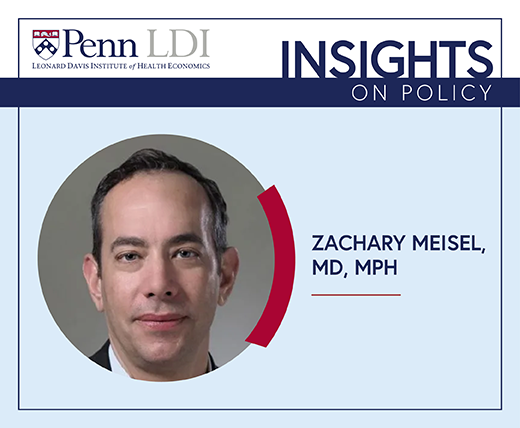
Health Benefits of Philadelphia’s Sweetened Beverage Tax
Testimony: Delivered to Philadelphia City Council’s Committee on Labor and Civil Service
Policy

On July 2, 2025, LDI Senior Fellow Sameed Khatana, MD, MPH and Nicholas Illenberger, PhD of NYU, wrote a research memo to House Speaker Mike Johnson and Senate Majority Leader John Thune estimating the impacts related to the SNAP provisions of the One Big Beautiful Bill Act.
The research memo estimates that the loss of SNAP due to provision in the One Big Beautiful Bill Act would result in 93,000 premature deaths between now and 2039.
Views expressed by the researchers are their own and do not necessarily represent those of the University of Pennsylvania Health System (Penn Medicine) or the University of Pennsylvania.
July 2, 2025
The Honorable Mike Johnson
United States House of Representatives
Washington, DC 20515
CC: The Honorable John Thune
United States Senate
Washington, DC 20510
Dear Speaker Johnson:
We are writing today as experts on the health impacts of SNAP (Supplemental Nutrition Assistance Program) to share evidence about the impacts of the SNAP provisions of the One Big Beautiful Bill, which the Senate has passed and is now under consideration in the House.
The Congressional Budget Office has estimated that 3.2 million people under 65 will lose SNAP as a result of the bill.1 We have previously researched the impacts of SNAP loss on the health of individuals. For example:
Peer-reviewed research from other investigators has quantified the mortality rate of individuals under age 65 with SNAP as compared to a similar group without SNAP over a fourteen-year period.4 Assuming a similar risk profile as prior SNAP participants, if we apply that estimate to the 3.2 million Americans projected to lose SNAP benefits under the bill, that would result in 93,000 premature deaths due to the loss of SNAP between now and 2039.
We would be happy to answer any questions or discuss our research or this projection with you.
Sincerely,
Sameed Khatana, MD
Assistant Professor of Cardiology, University of Pennsylvania School of Medicine
Senior Fellow, Leonard Davis Institute of Health Economics
Sameed.Khatana@pennmedicine.upenn.edu
Nicholas Illenberger, PhD
Assistant Professor, Department of Population Health
NYU Grossman School of Medicine
Nicholas.Illenberger@nyulangone.org
This communication represents the views of the researchers and not the institutions for which they work.

Testimony: Delivered to Philadelphia City Council’s Committee on Labor and Civil Service

Comment: Delivered to the National Center for Complementary and Integrative Health

Comment: Submitted to the U.S. Department of Veterans Affairs

Comment: Delivered to the U.S. Department of Labor

Memo: Delivered to the U.S. Food and Drug Administration (FDA)

Letter: Delivered to House Speaker Mike Johnson and Majority Leader John Thune